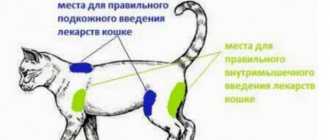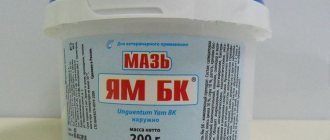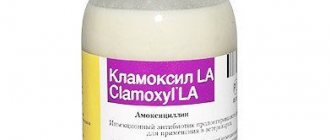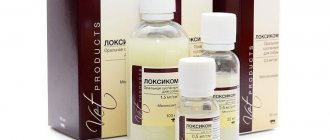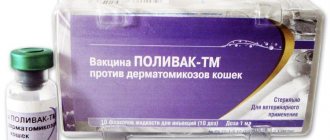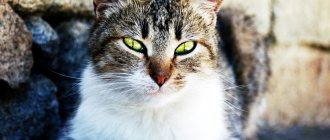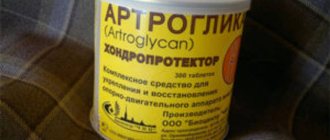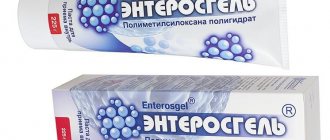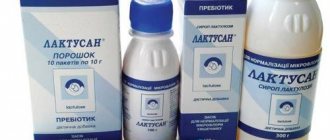For some acute diseases, cats are prescribed broad-spectrum antispasmodics, which are highly effective and relieve all inflammatory processes. This is exactly what the drug “Papaverine” is, which has now become very widespread. It reduces the tone and activity of muscle tissue.
This happens due to vasodilation. Due to the action of the drug, it is possible to eliminate the spasm and get rid of the pain syndrome. But is the drug really that good? Does it have any nuances and contraindications? Read about this and much more in our article.
Indications for use of the drug
The drug is widely used for:
- spasms of smooth muscles;
- urinary system infections;
- intestinal colic;
- diseases of the gastrointestinal tract;
- urinary tract spasms;
- cholecystitis;
- pylorospasm;
- to lower blood pressure.
Sometimes it is prescribed to animals that suffer from bronchospasm and spasm of peripheral vessels. The medicine can solve a number of problems that arise during illnesses. It helps relax the muscles and walls of the bladder, uterus, bronchi and many other organs.
Reference!
Sometimes an injection of “Papaverine” is administered before any surgical intervention or urological manipulation, as well as to relieve acute pain during the treatment of urolithiasis.
The advantage of using this drug is the painlessness of injections and the rapid distribution of the active substance in the tissues, which helps to quickly relieve pain. The injection is not painful and does not cause anxiety or discomfort in the cat.
Reviews of papaverine
Lilia: “My Timosha started having problems with urination after castration. He couldn't go to the toilet for several days. You could see how he was fading away before our eyes. He was in pain. We went to the vet. We were told that we needed to be put to sleep, that the cat would be of no use.
How can you put your beloved cat to sleep? I decided to contact another veterinarian and listen to her opinion. She prescribed us to inject papaverine into the withers for a week. I was surprised that the medicine was inexpensive and effective! After the first injection, Timosha came to life before our eyes! He went to the toilet, ate, and started walking around the house! My happiness knew no bounds! And now my good one lives happily. Sometimes similar cases still arise (relapses, it seems), but a course of papaverine always helps us out!”
Innocent . “My cat had a problem with acute pancreatitis (inflammatory disease of the pancreas). The cat was in pain and meowing. Well, that’s understandable, such spasms in the body. I immediately took him to a specialist. He prescribed treatment, including papaverine and baralgin to relieve pain. The veterinarian warned me that papaverine could cause side effects and asked me to sit in the veterinarian’s office for at least an hour to make sure that the cat would tolerate the injection.
He pricked him in the withers. Vader (my cat) did not like the injection, but after a while he was released. I felt it when I sat with him in the clinic. He relaxed his stomach! The doctor looked at us and said that now we can safely inject the prescribed therapy for a week and then go for an appointment. So during the treatment, Vader at least got some sleep and rested. As a result, thanks to the doctor and papaverine and baralgin, I have a healthy, impudent red face running around the house! »
Marianne. “My cat developed urolithiasis. I read somewhere that for renal colic, which occurs with urolithiasis, we give no-shpa. I went online. I read on the forums that no-shpa (drotaverine in medical language) often causes problems with the paws of cats and the cats stop walking. Instead, they wrote that they use papaverine. The drug is injected into the withers. I decided to try injecting my cat.
As a result, she started foaming at the mouth and couldn’t breathe properly! In a panic, I ordered a taxi and took him to the veterinary clinic. I was very severely reprimanded there for starting to self-medicate. Apparently I didn't read enough about the side effects. I wanted to save money on doctors. In the end I overpaid more. So, papaverine may be a good medicine, but you should not indulge in its use without a doctor. It is better to pay to have a veterinarian check the condition of your pets. »
Ivan Alekseevich, veterinary medicine doctor: “I have been working in the clinic for 15 years. Often cats are brought to us with attacks of renal colic due to urolithiasis that developed after surgery. Unfortunately, this is not uncommon. And often we try to give subcutaneous injections (in simple terms into the withers) of papaverine. In case of severe pain, we can add analgin or baralgin.
Pharmaceutical forms of “Papaverine” for cats
There are three forms of drug release:
- an injection solution, the antispasmodic effect of which lasts from six to eight hours, is packaged in glass ampoules of two milliliters, and ten such ampoules are placed in one box;
- tablets are used less frequently due to the fact that their analgesic effect occurs very slowly, packaged in 40 mg in separate packages;
- rectal suppositories (twenty milligrams each) are used if it is not possible to administer an injection and it is not possible to give the animal a pill.
Storage conditions and shelf life
The drug no-shpa and papaverine should be stored at a temperature not exceeding 25˚C, avoid exposure to sunlight.
Best before date:
- Pills. Shelf life – 36 months. The date of manufacture is indicated on the packaging.
- Solution. Shelf life – 60 months. The date of manufacture is indicated on the packaging.
- Papaverine tablets. Shelf life: 60 months.
- Papaverine for injection. Shelf life – 24 months.
- Papaverine suppositories. Shelf life – 24 months.
Instructions for use
In order to prevent negative consequences after using the drug, you must strictly follow the instructions for use, which must come with the medicine.
Attention!
“Papaverine” can be used with other types of analgesics. Do not use the drug for preventive measures under any circumstances; it can only be used for the treatment of acute diseases! It is forbidden to give the product to young kittens under six months of age.
Pharmacological effect of the drug: hypotensive and myotropic antispasmodic.
Medication dosages
One milliliter of the drug contains twenty milligrams of the active substance (papaverine hydrochloride), special water for injection, D, L-methionine and disodium edetate. The dosage is always chosen only by the doctor. He does this based on the clinical picture of the cat’s disease, the form of the drug, the age and weight of the animal.
- In the form of injections, it is recommended to administer only 0.01-0.05 grams to cats, subcutaneously, intramuscularly, twice a day.
- If it was decided to use tablets, they are used in an amount of 1.2-1.5 milligrams per kilogram of animal weight, orally, twice a day.
- Suppositories (one or two milligrams per kilogram of weight), twice a day, but it is allowed to use up to four pieces per day.
Where and how to inject?
The medicine can be administered subcutaneously (into the withers), intravenously and intramuscularly (into the thigh).
The injection should be administered by a doctor in a veterinary clinic, so that the animal does not experience stress from an incorrect injection and the owner’s fear of injecting this same injection, and also to prevent injury to the pet.
In the hospital, cats behave more restrained and allow the necessary manipulations to be carried out, but at home, realizing that the person feels sorry for him, they can run away with a needle in their body or even bend it, which can lead to injury to the animal.
An incorrectly administered injection can harm your pet, so its implementation must be approached very responsibly and seriously.
Well
The course of treatment is always determined only by the attending veterinarian. The duration of medication depends on many factors, the main of which is the stage of the disease and its complexity. Typically, the course of use of the drug does not exceed seven days, but there are also more advanced cases when the period of taking the drug is increased.
general description
The antispasmodic is produced in several dosage forms:
- Injection
. The transparent liquid is packaged in sealed glass ampoules. Some manufacturers use bottles with a plastic cap. They are considered more convenient to use, since there is no risk of injury from glass when opening. 1 ml of solution usually contains 20 mg of papaverine hydrochloride. The composition also includes purified water and other components. - Pills
. Round white tablets are packaged in contour cells of 10 pieces. In pharmacies they come in two dosages - one tablet may contain 10 or 40 mg of the active substance. In addition, the composition includes potato starch, talc, stearic acid and other components that perform exclusively an auxiliary function. - Rectal suppositories
. Small candles are packaged in PVC plates. The concentration of the active substance in them is 20 mg. Excipients are solid fat, emulsifier and cosmetic stearin.
For cats, Papaverine is most often used in injections. The solution is quick-acting, but the tablets are less effective. The active substance included in their composition “works” on the body only half (bioavailability is only 54%). Candles for animals are used in rare cases.
This is interesting: The kitten interferes with sleep
Contraindications
The drug has a large number of contraindications and side effects. It is imperative to study them before treating your pet with it. “Papaverine” should not be used for:
- liver failure;
- glaucoma;
- shock and stress;
- dysfunction of the adrenal glands.
It is allowed to be used with caution in cases of tachycardia and arrhythmia, but after administration the animal must be monitored. Do not use in old age or young kittens (up to six months).
Typically, animals tolerate the effects of this antispasmodic substance well, but there are cases of individual intolerance and some complications in the form of side effects.
Possible side effects:
- nausea;
- apathy, drowsiness;
- constipation;
- aggression and increased nervousness;
- heavy sweating;
- disturbances in the functioning of the heart;
- decrease in blood pressure.
Most often, side effects are observed only in cases where the dosage is exceeded. Sometimes, a drug is categorically unsuitable for an animal, but there is no apparent reason for this. In this case, you need to consult a veterinarian about replacing the drug with another one containing a different active ingredient.
When is medication not prescribed?
The drug is not prescribed for liver pathology.
It is prohibited to give injections, give tablets and use suppositories when the cat has the following conditions:
- allergic reactions to individual components of the pharmaceutical product;
- disruption of the cardiovascular system;
- liver failure.
There are also situations when Papaverine can be used with special care:
- being in a state of shock;
- renal and adrenal insufficiency.
Possibility of overdose
Important!
You cannot use “Papaverine” without consulting and prescribing a veterinarian!
Due to incorrect calculation of the volume of the drug per animal weight, an overdose may occur. Its consequences may be:
- loss of vision (temporary or permanent);
- arrhythmia;
- disturbances in vision (double vision);
- headache, nausea;
- paresis of the hind limbs;
- strong sedative effect;
- decreased excitability of the heart muscle.
In case of overdose, you must immediately stop using the drug and remove it from the body as quickly as possible and ensure that blood pressure is maintained. Gastric lavage (when taking pills) and enterosorbents are prescribed. Do not let the animal eat until it has been examined by a specialist.
How it works
The medication has an antispasmodic effect, that is, the ability to eliminate spasms. The drug also relieves pain that accompanies spasms and lowers blood pressure. The effect of the drug is due to the fact that the active substance blocks the synthesis of enzymes, as a result of which the tone of the smooth muscles that make up the stomach, bladder, kidneys and other internal organs decreases.
When smooth muscle tone is greatly increased, a spasm occurs, which is usually accompanied by acute pain. Under the influence of Papaverine, the muscles of the internal organs relax and tone decreases. The medicine also helps to dilate blood vessels, thereby achieving a hypotensive effect (lowering blood pressure). The drug also has a calming effect on the central nervous system. In this regard, when using Papaverine, animals become calmer and stop showing anxiety.
Note! The drug can affect cardiac activity, so using it on pets without a veterinarian’s prescription is strictly prohibited.
Possible side effects
The antispasmodic can cause the following side effects in cats:
- nausea and vomiting (when using tablets, increased salivation may also occur);
- drowsiness and lethargy;
- heavy sweating;
- lowering blood pressure;
- heart rhythm disturbances;
- constipation
Since the medication affects the central nervous system, temporary loss of hearing or vision and decreased concentration may occur. The risk of side effects increases when the dose is exceeded, so consultation with a doctor before use is required.
